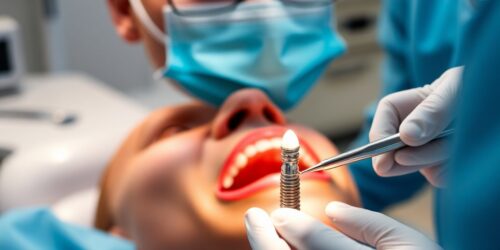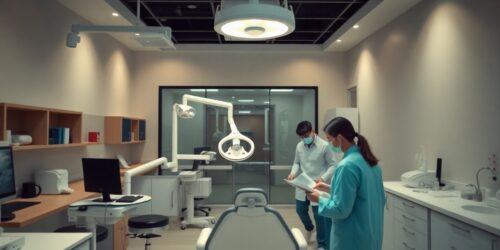How Does Laser Dentistry Improve Patient Comfort And Recovery Times?
With advancements in dental technology, laser dentistry has emerged as a transformative method that significantly enhances your experience during treatments. By employing focused light beams, this innovative approach reduces discomfort and minimizes bleeding, leading to a more comfortable visit. Moreover, the precision of laser procedures often results in faster healing times compared to traditional techniques, allowing you to return to your daily routine sooner. Understanding how laser dentistry works can help you appreciate its benefits in enhancing not only your comfort but also your overall recovery process.
Key Takeaways:
- Minimized Pain: Laser dentistry significantly reduces discomfort during procedures, often eliminating the need for anesthesia.
- Quicker Recovery: Patients experience accelerated healing times due to less tissue damage compared to traditional methods.
- Reduced Bleeding: Lasers promote coagulation of blood vessels, resulting in minimal bleeding and swelling during procedures.
- Lower Anxiety: The precision and gentleness of laser technology help alleviate patients’ fears, making dental visits more pleasant.
- Precision Treatment: Lasers allow for targeted procedures, preserving surrounding healthy tissue and enhancing overall outcomes.
Understanding Laser Dentistry
Before the advent of laser technology, traditional dental procedures often involved drills and other instruments that could cause discomfort and anxiety for patients. Today, laser dentistry provides a modern solution, utilizing focused light energy to perform various dental treatments with precision and minimal discomfort. This remarkable technology enhances your experience at the dentist while facilitating quicker recovery times.
Principles of Laser Technology
The fundamentals of laser technology revolve around the use of concentrated light beams that can target specific tissues without damaging surrounding areas. This precision allows for less bleeding, reduced pain, and faster healing, ultimately elevating your comfort during dental procedures.
Types of Lasers Used in Dentistry
Laser technology encompasses several types of lasers that cater to different dental needs, including:
- Hard tissue lasers for procedures involving teeth and bone.
- Soft tissue lasers suitable for gums and oral soft tissue procedures.
- Diode lasers for various applications, including periodontal treatments.
- Carbon dioxide lasers often used for various surgical procedures.
- Erbium lasers effective in both hard and soft tissue treatments.
After understanding the different types of lasers, you can appreciate how these tools enhance both your comfort and the efficiency of dental treatments.
| Type of Laser | Common Uses |
| Hard Tissue Laser | Teeth and bone procedures |
| Soft Tissue Laser | Gum procedures and lesion removal |
| Diode Laser | Periodontal treatments |
| Carbon Dioxide Laser | Surgical procedures |
| Erbium Laser | Soft and hard tissue treatments |
Understanding the various lasers utilized in dentistry allows you to become informed about the advantages of laser treatments. Each type plays a unique role in improving your dental procedures, enhancing your comfort, and reducing recovery times. When you choose laser dentistry, you choose an innovative approach tailored to your needs.
- Enhanced precision during treatments.
- Minimized discomfort and anxiety.
- Reduced swelling and bleeding.
- Faster healing and recovery.
- Less need for anesthesia in many procedures.
After learning about the benefits of lasers in dentistry, you will likely feel more confident in your dental care journey.
| Benefits | Impact on Patient Experience |
| Precision | Less trauma to surrounding tissues |
| Reduced Pain | Lower reliance on pain management |
| Faster Recovery | Less downtime following procedures |
| Minimal Bleeding | Quicker and cleaner procedures |
| Less Anesthesia | More comfortable experiences overall |
Benefits of Laser Dentistry
There’s a growing acknowledgment of the benefits of laser dentistry, which enhances patient experience while offering advanced treatment options. With reduced pain and quicker recovery times, laser procedures are transforming dental care. To learn more about The Role of Lasers in Dental Procedures, you’ll find invaluable insights that shed light on this innovative technology.
Pain Reduction and Patient Comfort
Patient comfort is significantly enhanced through laser dentistry, as these procedures typically involve less discomfort compared to traditional methods. The precision of lasers minimizes damage to surrounding tissues, leading to reduced swelling and bleeding, which ultimately contributes to a more pleasant dental experience.
Minimally Invasive Procedures
Against conventional techniques, laser dentistry offers a minimally invasive approach that requires less tissue removal. This means less trauma to your mouth, resulting in improved comfort and faster healing times.
Understanding how minimally invasive procedures work can greatly benefit you during your dental treatment. By using lasers, dentists can target specific areas with precision, significantly reducing the need for anesthesia and stitches. This approach not only enhances your experience but also shortens recovery periods, allowing you to resume normal activities sooner. With less invasive techniques, you can enjoy a more efficient and comfortable dental experience.
Impact on Recovery Times
Not only does laser dentistry enhance patient comfort, but it also significantly improves recovery times. With reduced discomfort and minimal downtime, you can return to your daily activities sooner. Explore Aspiring Smiles Laser Dentistry to learn more about how this technology can benefit you.
Reduced Tissue Trauma
Below, you’ll find that laser dentistry minimizes tissue trauma during procedures. Traditional dental methods often involve scalpels and drills, leading to increased bleeding and pain. In contrast, lasers precisely target the affected area, preserving surrounding tissues and reducing the impact on your mouth. This results in less swelling and discomfort throughout your recovery.
Faster Healing Processes
Times are changing, and with laser dentistry, you can experience faster healing processes. The precision of lasers not only minimizes damage but also encourages quicker recovery by promoting optimal blood flow and reducing inflammation.
Processes such as cauterization occur simultaneously with laser treatment, which helps seal blood vessels and nerve endings. This immediate action accelerates healing and reduces the risk of complications. Additionally, the antimicrobial properties of lasers can decrease the chances of infection, further supporting a swift recovery. Overall, you can enjoy an efficient healing journey, allowing you to get back to your routine without delay.
Case Studies and Patient Testimonials
All your questions about the advantages of laser dentistry can be answered through real-world cases and patient experiences. Here are some compelling statistics:
- 85% of patients reported lower anxiety levels during laser procedures compared to traditional methods.
- Recovery time reduced by up to 50% for 70% of patients undergoing gum reshaping.
- 90% of patients experienced minimal pain after procedures, often requiring no pain medication.
- In a survey, 78% of patients said they would choose laser dentistry again for future dental work.
This information shows how laser dentistry can enhance your comfort and speed up healing. For more insights, check out this article about How does laser dentistry improve patient comfort and recovery ….
Comparing Traditional Dental Procedures with Laser Techniques
Your dental experience can vary significantly between traditional procedures and innovative laser techniques. The table below breaks down key differences to help you understand the benefits of laser dentistry:
| Traditional Procedures | Laser Techniques |
|---|---|
| Often involves drills, which can cause discomfort and anxiety. | Laser tools minimize discomfort, often eliminating the need for anesthesia. |
| Longer recovery times due to tissue trauma. | Faster recovery as lasers are less invasive, causing minimal damage. |
| Risk of bleeding during and after treatment. | Lasers promote coagulation, reducing bleeding significantly. |
| Higher likelihood of post-operative pain. | Less pain reported due to reduced tissue disruption. |
Future Trends in Laser Dentistry
Once again, advancements in technology are shaping the future of laser dentistry. You can expect to see enhanced precision and new laser types that further minimize discomfort during procedures. Additionally, developments in diagnostic lasers will help your dentist identify issues earlier, reducing the need for more invasive treatments later on. As research continues to unveil the benefits of laser applications, you may find that your dental visits become quicker and more efficient, allowing for shortened recovery times and an overall more comfortable experience.
Conclusion
Following this, you can appreciate how laser dentistry enhances your comfort and speeds up recovery times significantly. By minimizing the need for anesthesia and reducing pain and bleeding, laser treatments create a more pleasant dental experience. Additionally, the precision of lasers leads to quicker healing and less postoperative discomfort. Embracing this advanced dental technology allows you to enjoy a better, more efficient oral care process, ultimately promoting your overall dental health and wellbeing.
Q: What is laser dentistry and how does it work?
A: Laser dentistry involves the use of focused light beams to perform various dental procedures. This technique targets specific tissues without affecting the surrounding areas, making treatments more precise. The lasers can be used for soft tissue surgeries, teeth whitening, cavity removal, and more, often resulting in less bleeding and swelling compared to traditional methods.
Q: How does laser dentistry enhance patient comfort during procedures?
A: Laser dentistry typically requires little to no anesthesia, which many patients find more comfortable. The laser generates minimal heat and vibrations, reducing discomfort during the procedure. Additionally, lasers have a higher ability to vaporize tissue, which often results in less pain and a more pleasant experience for patients compared to traditional dental instruments.
Q: What impact does laser dentistry have on recovery times?
A: Recovery times after laser dental procedures are generally shorter than traditional dental methods. Due to the precision of lasers, there is often less damage to surrounding tissues, leading to reduced inflammation and quicker healing. Many patients can resume normal activities shortly after their procedures, experiencing less downtime compared to conventional techniques.
Q: Are there any risks associated with laser dentistry?
A: While laser dentistry is considered safe, as with any medical procedure, there are some risks. Potential side effects may include temporary discomfort or sensitivity in the treated area. However, these are typically mild compared to conventional treatments. It’s crucial for patients to discuss their medical history and any concerns with their dentist before undergoing laser procedures to ensure safety and effectiveness.
Q: Is laser dentistry suitable for all patients?
A: Laser dentistry is generally suitable for a wide range of patients, including children and those with dental anxiety. However, certain conditions may make it less appropriate for some individuals, such as those with specific medical disorders or respiratory issues. A thorough consultation with a dental professional can help determine if laser dentistry is the right option for each unique case.




